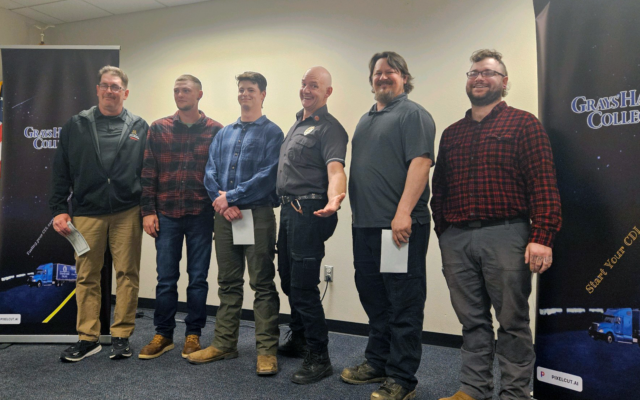Remains found in Grays Harbor lead to discovery of new species

Originally posted January 4, 2018
New research released this week looks at a species of newly discovered ancient seal that lived in the Grays Harbor area during the Miocene Epoch.
As a reference, the Miocine is the period from 23.03 to 5.333 million years ago.

Published in the Zoological Journal of the Linnean Society by Robert W Boessenecker of the Department of Geology and Environmental Geosciences at the College of Charleston and the University of California Museum of Paleontology, the study is called
“The last of the desmatophocid seals: a new species of Allodesmus from the upper Miocene of Washington, USA, and a revision of the taxonomy of Desmatophocidae“.
He says that while the family of seals is well known and studied using “abundant well-preserved fossils, the taxonomy and evolutionary relationships of this family remain poorly known”, and his study specifically looks at the new species, Allodesmus demerei, named in honor of Dr. Thomas A. Deméré “for his mentorship, support, and influential contributions to the study of fossil pinnipeds and other marine mammals”.
“Given that Al. demerei is the only known Allodesmus from the Montesano Formation, we tentatively assign this specimen to the species; future discoveries of more complete skeletons are needed to confirm this identification.”
A partial skeleton of the creature was found in the “upper Miocene Montesano Formation of Washington“ in the 1980’s featuring “cranium, mandibles, and axial skeleton”.

The more specific areas where the remains were found are “along the bank of the west fork of the Satsop River near Swinging Bridge Park” as well as “exposed in bank of Canyon River“.
The discovery of these remains led to studies on what is believed to be ”the last of the desmatophocid seals” after a 1994 study by Phillip K. Bigelow discovered teeth in the skull, suggesting “the first published occurrence of a shark from the Montesano Formation”.
Funded by a University of Washington Burke Museum of Natural History and Culture Vertebrate Paleontology Collection Study Grant, the newly released study looks at tests done on the remains and a comparison of specimens, further classifying the species.
“Walruses diversified and increased in body size during the mid- to late Miocene as desmatophocids declined, suggesting some form of ecological displacement.”
Reading the study, the area described is not near where Grays Harbor lies today, but much further inland as the water covered far more of the region.
In the geological background, it speaks of not only the Montesano Formation, but also the “Wishkahan provincial megainvertebrate stage”, and “Graysian stage” while further details on the “Pacific Northwest Cenozoic Biostratigraphy“ it lists segments such as the “Moclipsian Formation” and “Matlockian Formation”
In the study, it says that climate change and “the rapidly diversifying walruses” during the time period “played a role in their decline and extinction”.
Robert W Boessenecker, Morgan Churchill; The last of the desmatophocid seals: a new species of Allodesmus from the upper Miocene of Washington, USA, and a revision of the taxonomy of Desmatophocidae, Zoological Journal of the Linnean Society, , zlx098, https://doi.org/10.1093/zoolinnean/zlx098
The last of the desmatophocid seals: a new species of Allodesmus from the upper Miocene of Washington, USA, and a revision of the taxonomy of Desmatophocidae



